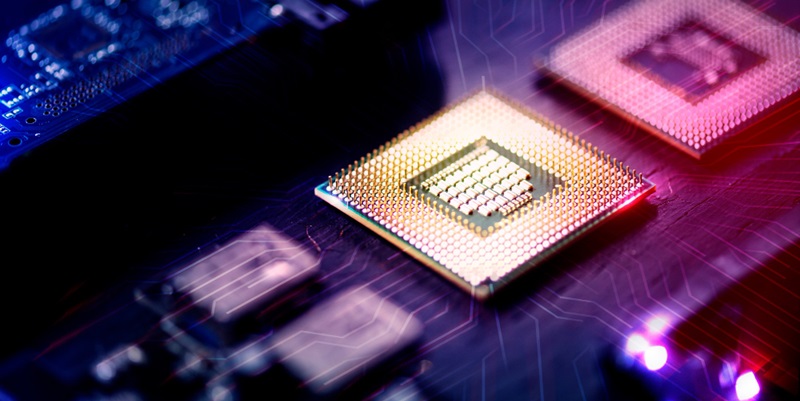With the release of the highly anticipated AMD Zen 5 family of processors on the horizon, there has been an influx of updates and optimizations within the Linux ecosystem over the past few months. Linux driver support has played a pivotal role in ensuring seamless integration and maximum performance for AMD processors. As the Zen 5 CPUs are set to make their debut, AMD’s engineers have been diligently preparing a new driver specifically tailored to add support for these upcoming processors within the Linux environment.
Preparing a new driver for Zen 5 CPUs in Linux
The AMD engineering team, dedicated to Linux driver support, has embarked on the journey of creating a distinctive driver to cater to the unique power management requirements of the Zen 5 CPUs. This driver, known as the AMD PMC driver, takes charge of handling the crucial ‘S2’ idle state and other related power management tasks. By fine-tuning these aspects, the driver aims to deliver optimal efficiency and performance for Zen 5 processors when operating in Linux environments.
Family 26 (1Ah) support for Zen 5 CPUs
Critical to the successful integration of the Zen 5 series processors, the AMD PMC driver lists support for the Family 26 (1Ah) designation. This compatibility ensures that the driver is finely tuned for the entire range of Zen 5 CPUs and can efficiently manage their power states and associated features.
Variants and flavors of Zen 5 CPUs
AMD’s Zen 5 CPUs are expected to arrive in a variety of configurations catered to different market segments. The EPYC Turin family will target data centers, enabling them to harness the full potential of these next-generation processors. The Granite Ridge family will cater to mainstream Ryzen desktop CPUs, delivering outstanding performance and efficiency to power users and gamers alike. Additionally, Strix Point will offer Ryzen mobility CPUs, revolutionizing the mobile computing experience with enhanced capabilities and power efficiency.
Architecture variants of Zen 5 CPUs
The Zen 5 architecture introduces two distinct variants, each bringing its own set of advantages and targeting specific use cases. The first variant, codenamed Nirvana ‘Zen 5’, is designed to offer top-tier performance and efficiency for a wide range of applications. Alternatively, Prometheus ‘Zen 5C’ takes a different approach, emphasizing specific optimizations to meet the unique demands of certain computing workloads.
Features and enhancements of Zen 5 architecture
AMD’s Zen 5 architecture has been built from the ground up, incorporating a plethora of enhancements to elevate performance and efficiency. This new iteration boasts a re-pipelined front-end, allowing for wider issue capabilities. Additionally, Zen 5 CPUs integrate advanced AI/ML blocks, enabling improved performance in both AI PC and AI HPC segments. With increased cache and better-integrated graphics powered by RDNA 3, Zen 5 processors promise to deliver an exceptional computing experience. Moreover, support for the latest I/O options, enhanced platform compatibility, and the introduction of new features and technologies further solidify the Zen 5 CPUs as a formidable choice for enthusiasts and professionals alike.
Expected launch and preview of Zen 5 CPUs
While the official launch of Zen 5 CPUs is anticipated for the second half of 2024, AMD may provide a tantalizing preview of these groundbreaking processors at their upcoming CES 2024 event. This preview will likely generate excitement and offer a glimpse into the remarkable performance and capabilities that Zen 5 brings to the table.
Improvements brought by the Zen 5 architecture
The Zen 5 architecture introduces a multitude of enhancements over its predecessors. Expect increased IPC (Single-Core Performance), higher core clocks, and improved performance per watt, creating a harmonious balance between power and efficiency. Moreover, Zen 5 CPUs are expected to be more cost-effective than the Ryzen 7000 series, making them an attractive option for budget-conscious consumers. With augmented cache and breakthrough integrated graphics powered by RDNA 3, creators and gamers can anticipate an elevated experience. Additionally, Zen 5 processors are designed to support the latest I/O options, provide better platform support, and introduce exciting new features and technologies for a future-forward computing environment.
AMD is focusing on optimizing Linux support for Zen 5 CPUs
AMD recognizes the significance of Linux in today’s computing landscape and remains committed to delivering optimal compatibility and maximum performance for Zen 5 CPUs within Linux environments. The engineering team is actively engaged in optimizing Linux support for these processors to ensure a smooth user experience upon their highly anticipated launch in 2024. By fine-tuning Linux compatibility and leveraging the strengths of the Zen 5 architecture, AMD aims to create a seamless and efficient computing ecosystem for Linux users.
The AMD Zen 5 family of processors is poised to redefine the computing landscape with its groundbreaking architecture and performance capabilities. As AMD’s engineers diligently work on optimizing Linux support for these processors, users can rest assured that they will experience uncompromised compatibility and enhanced performance within Linux environments. The Zen 5 CPUs are set to launch in the second half of 2024, with a potential preview at CES 2024. Expectations are running high, with increased IPC, higher core clocks, improved performance per watt, and a myriad of other improvements. Zen 5 CPUs are undoubtedly poised to raise the bar for computing excellence.

